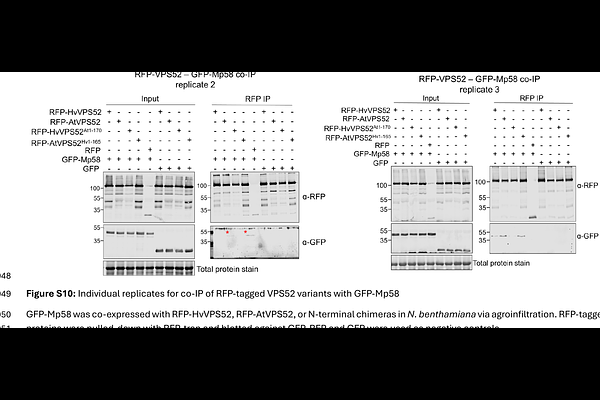The highly conserved aphid effector pair Mp1-Mp58 associates to form an effector complex that targets host trafficking protein VPS52

The highly conserved aphid effector pair Mp1-Mp58 associates to form an effector complex that targets host trafficking protein VPS52
Bleau, J. R.; Gaur, N.; Waksman, T.; Fisher, S. R.; Porter, M.; Bos, J. I.
AbstractPathogen and pest effectors play a crucial role in manipulating plant biological processes, facilitating infection and infestation. While pathogens and pests secrete repertoires of effectors into their host plants, most effector function studies focus on characterising individual proteins. We previously identified a genetically linked and co-regulated gene pair in the aphid Myzus persicae encoding effectors Mp1 and Mp58. Here, we explored the functional link between these effectors. We used ectopic expression assays in Nicotiana benthamiana followed by co-immunoprecipitation assays and confocal microscopy to explore effector-effector and effector-target interactions and their subcellular localisation. We produced recombinant proteins to validate effector interactions and used computational modelling to predict effector complex 3D structures. We revealed that effectors Mp1 and Mp58 interact in planta and in vitro and likely form an oligomeric complex. Both effectors associate with the host target Vacuolar Protein Sorting associated Protein 52 (VPS52) to form an Mp1-Mp58-VPS52 complex which localises at vesicle-like structures. Our findings point to effector complex formation in plant-insect interactions and highlight a further layer of complexity in the molecular dialogue between plants and insects. Our work also shows the importance of considering the context in which effectors may function within a larger effector repertoire.